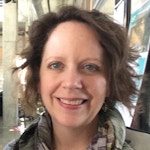BioFacades Classification
a framework for building-nature integration
Presented on October 10, 2024 at Facade Tectonics 2024 World Congress
Sign in and Register
Create an Account
Overview
Abstract
Coauthors:
Mary Ben Bonham, Department of Architecture + Interior Design, Miami University, Oxford, OH, USA [corresponding] [presenting at the conference]
Kyoung Hee Kim, School of Architecture, University of North Carolina at Charlotte, Charlotte, NC, USA [presenting at the conference]
Christiane M. Herr, School of Design, Southern University of Science and Technology, Shenzhen, China
Title: BioFacades Classification - a framework for building-nature integration.
Abstract
BioFacades Classification provides a framework to articulate methods and benefits of building-nature integration in dense urban settings. This presentation will present the classification system and highlight key features and challenges of this emerging area of practice.
Built environment researchers are increasingly interested in ways that building enclosures and biological organisms can cooperatively intersect to contribute positively to human wellbeing and to support biodiversity in urban ecosystems (Butt et al, 2018; Grobman et al, 2023). In addition to green walls, planted balconies, and green roofs, building-nature integration can take innovative or unexpected forms. For example, researchers are studying the potential for building skins to be designed with layers and materials that support microalgae growth (Kim, 2022) or the growth of desirable microbial communities to enhance human health (Herr et al, 2022).
Like bioclimatic design, building-nature integration requires deep investigation into local climate and cultural patterns of occupation. Because building-nature integration also considers flora and fauna, the interdisciplinary aspect of enclosure design broadens to include natural scientists. A nomenclature and classification system is needed to assist researchers, building designers and façade manufacturers in establishing goals and communicating performance benefits in the complex process of developing bio-integrated building enclosures.
The classification system expands on the cartesian and wall layer taxonomy for building-nature integration proposed in the Façade Tectonics SKINS article, “Biofacades: Integrating Biological Systems with Building Enclosures” (Bonham & Kim, 2022). The framework encompasses a range of engineered solutions that blur the boundaries between artificial and natural systems. This research aims to develop a common language that diverse stakeholders and collaborators can use to evaluate sites, building systems, and measures of success when designing for building-nature integration.
References
Bonham, M.B.; Kim, K.H. Biofacades: Integrating Biological Systems with Building Enclosures. Façade Tectonics SKINS, July 15, 2022. https://www.facadetectonics.org/articles/biofacades-integrating-biological-systems-with-building-enclosures
Butt, N.; Shanahan, D.F.; Shumway, N.; Bekessy, S.A.; Fuller, R.A.; Watson, J.E.M.; Maggini, R.; Hole, D.G. Opportunities for Biodiversity Conservation as Cities Adapt to Climate Change. Geo Geography Environment 2018, 5, e00052. https://doi.org/10.1002/geo2.52
Grobman, Y.J.; Weisser, W.; Shwartz, A.; Ludwig, F.; Kozlovsky, R.; Ferdman, A.; Perini, K.; Hauck, T.E.; Selvan, S.U.; Saroglou, S.; et al. Architectural Multispecies Building Design: Concepts, Challenges, and Design Process. Sustainability 2023, 15, 15480. https://doi.org/10.3390/su152115480
Herr, C.; Blokhina, E.; Gao Z;, Ji, Y., Jiang, Y. Designing Biodiverse High-Rise Façade Microbiomes for Healthy Urban Environments. CTBUH Journal 2022, IV, 20-27.
Kim, K.H. Microalgae Building Enclosures: Design and Engineering Principles; Routledge: England, UK, 2022.
Authors

Mary Ben Bonham
Professor
Miami University

Kyoung Hee Kim
Professor, Director of IDRL | Founder of EcoClosure
EcoClosure
